Liquid Metallic Hydrogen
Liquid metallic hydrogen, which the planets Jupiter and Saturn are made of, is not an earthly substance. Even so, we might be able to get an idea of what it is from another substance called Mercury. Mercury is what is found in a thermometer.
As shown in this picture, the element Mercury, at room temperature and at surface pressure, is a metallic liquid.
At temperatures and pressures within the giant planets, 10,000 degrees and thousands of times the pressure at sea level, the element hydrogen, which is normally a gas, becomes a metallic liquid. (It changes phase from a gas to a liquid).
Since the environment within a giant planet, of thousands of degrees in temperature, and extreme pressures, cannot be duplicated at earth at all, we may never be able to see liquid metallic hydrogen. But it may look very much like Mercury does in this picture.
You might also be interested in:
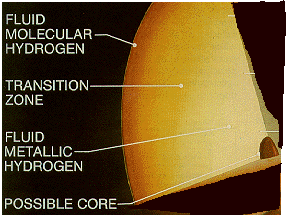
The first liquid layer inside Jupiter, right under the atmosphere, is the liquid hydrogen layer. The hydrogen atmosphere becomes thicker and thicker, like a dense fog, with more and more liquid droplets,
...more
The first liquid layer inside Saturn, right under the atmosphere, is the liquid hydrogen layer. The hydrogen atmosphere becomes thicker and thicker, like a dense fog, with more and more liquid droplets,
...more
AU stands for Astronomical Units. It is a useful way to measure the distances in interplanetary space. It is the distance between the Earth and the Sun, which is about 93 million miles. For reference,
...more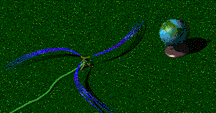
The solar wind is formed as the Sun's top layer blows off into space, carrying magnetic fields still attached to the Sun. Gusts form in the solar wind associated with violent events on the Sun. Particles
...more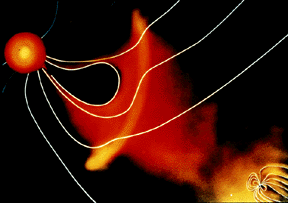
For a planet to be affected by a blob of material being ejected by the sun, the planet must be in the path of the blob, as shown in this picture. The Earth and its magnetosphere are shown in the bottom
...more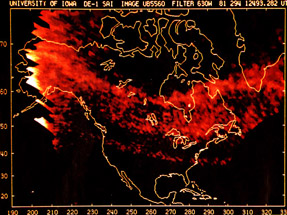
The aurora we are most familiar with is the polar aurora. This is what people are talking about when they say the northern or southern lights. But there are other less-known aurora, such as SAR arcs.
...more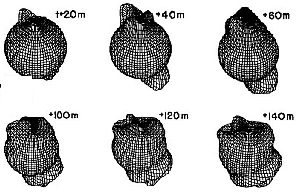
This figure shows the effect of the aurora on the atmosphere. When FAC's enter the atmosphere and create the aurora, they heat the atmosphere suddenly and abruptly. This creates an impulse which travels
...more













